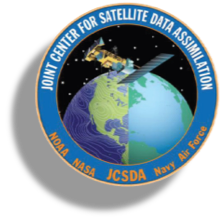After more than a year of work on replicating current data assimilation outputs with JEDI, NASA’s Atmospheric Data Assimilation team at the Global Modeling and Assimilation Office (GMAO) has successfully completed a major milestone in the path toward JEDI implementation by passing the acceptance criteria for JEDI Unified Forward Operator (UFO), matching all JEDI/UFO input/output pairs to their existing model. This is a huge step forward for putting JEDI into operational use, laying the foundation for not just transitioning to JEDI but for adding capabilities that don’t exist in the current system.
The project team are the first JEDI developers in the NASA system, spearheading work that no one has done before and learning how to translate the old data assimilation system’s functions to JEDI. Along the way they contributed a great deal back to the JEDI repositories at JCSDA, finding bugs and inefficiencies as well as adding forward operator use-cases and improvements.
“We’re really proud of the team, and they’ve worked very hard,” says Dr. Ron Gelaro, lead scientist for atmospheric data assimilation at GMAO and NASA/GMAO representative on the JCSDA Executive Team. “This has really advanced our effort [with JEDI].”
The whole team went out for dinner last month to celebrate their milestone accomplishment, a well-earned treat after months of dedicated progress. With the observation inputs and outputs now matched, they are ready and excited to start exploring all the advancements JEDI can bring to their current modeling system.
“They did not only the configuration that NASA needed, but contributed a lot back to the Joint Center,” says Dr. Gelaro. “Thanks to them we’re very advanced in this area compared to most groups.We’re very proud of them for that.”
Congratulations to the NASA Atmospheric Data Assimilation Team!
Learn more about the project in this interview with Dr. Gelaro

